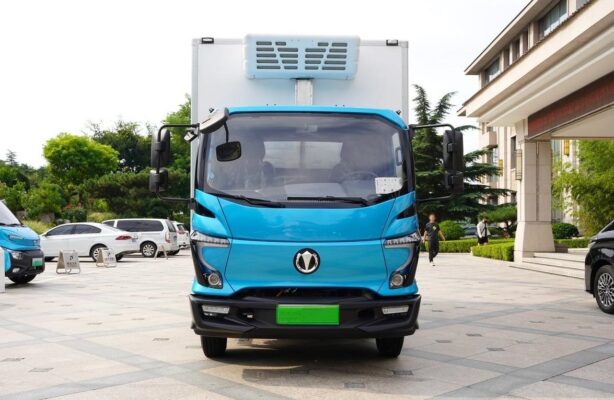Electric Truck News
Why Are Electric Vehicles So Highly Sought After?
With the global urgency around environmental issues, the world’s reliance on fossil fuels and traditional combustion-engine vehicles is shifting. Electric vehicles (EVs) have emerged as a pivotal solution, capturing attention as a symbol of sustainable, clean energy and rapidly gaining traction worldwide. As nations race to develop and manufacture EVs, the reasons behind their popularity and the competition to lead in this industry reveal insights into economic, environmental, and technological dynamics shaping modern transportation.
Why Are Electric Vehicles Receiving So Much Attention?
Electric vehicles have garnered interest primarily because they offer significant environmental and societal benefits, from zero emissions to noise reduction and renewable energy integration. Unlike traditional fuel-powered vehicles, EVs produce no exhaust emissions during operation, contributing directly to cleaner air and improved public health. For cities plagued by air pollution, transitioning to EVs offers a clear path to reducing carbon emissions, decreasing greenhouse gases, and improving overall urban air quality.
EVs are also quieter due to their electric motors, which produce little to no sound compared to the combustion engines that typically power vehicles. This quietness helps reduce noise pollution in densely populated areas and creates a more comfortable soundscape for urban life. Another important benefit of EVs is that they can be charged using renewable energy sources such as wind, solar, and hydroelectric power. This means EVs have the potential to be powered by cleaner energy, decreasing reliance on finite fossil fuel resources and supporting a transition to sustainable energy sources.
Additional Benefits of EVs
Electric vehicles bring many other advantages to individuals and society at large. Their technological innovations often come with enhanced safety features, improved driving experiences, and cost savings over time.
- Lower Operating Costs: EVs generally have lower long-term maintenance and fueling costs compared to fuel-powered vehicles. Since electric motors have fewer moving parts, they require less frequent maintenance, and the cost per mile for electricity is often lower than for gasoline or diesel.
- Performance: Electric motors provide instant torque, enabling faster acceleration and a smoother driving experience. Some high-performance EVs can rival, or even exceed, the acceleration of traditional sports cars, providing an exciting driving experience without compromising on sustainability.
- Advanced Technology: EVs frequently come equipped with the latest technological features, such as autonomous driving assistance, regenerative braking, and smart energy management systems that optimize power usage. Many models also offer connectivity features that enable remote control of certain functions through smartphone apps, adding convenience to the driving experience.
- Health Benefits: By reducing tailpipe emissions, EVs contribute to better public health outcomes. Reduced air pollution can decrease the incidence of respiratory diseases, cardiovascular problems, and other health issues associated with poor air quality.
Why Are Countries Competing to Develop and Produce EVs?
As EVs promise substantial societal and economic benefits, many countries are competing to lead in the development and production of electric vehicles. Several factors drive this competition, ranging from economic incentives to energy independence and national security. For countries aiming to secure a place in the future of automotive technology, investing in EVs aligns with long-term goals that are both economically advantageous and strategically sound.
1. Economic Opportunity
The electric vehicle industry represents a rapidly growing sector with considerable economic potential. By establishing themselves as leaders in the EV market, countries can foster economic growth, create high-tech jobs, and drive industrial transformation. For emerging and established economies alike, EV production can stimulate innovation and economic diversification, boosting GDP and enabling technological leadership on the global stage. The growth of the EV sector also drives demand for advanced manufacturing, electronics, software development, and battery production, creating a wide-ranging economic ecosystem.
2. Renewable Energy Synergy
As nations increasingly prioritize renewable energy, the EV industry serves as a natural complement to this shift. By investing in EV infrastructure and technology, countries not only support renewable energy development but also create new markets for clean energy. EV charging stations that rely on renewable energy sources create a sustainable loop, where cleaner energy powers cleaner transportation, further reducing carbon emissions.
3. Energy Independence and National Security
Reducing dependency on imported oil is a strategic priority for many nations, especially those with limited natural fossil fuel resources. Developing a robust EV industry allows countries to shift from fossil fuel dependency to greater energy independence by utilizing domestically generated electricity. Furthermore, by investing in EV infrastructure and renewable energy sources, countries can secure a more stable energy supply, strengthening their energy security and reducing vulnerability to global oil price fluctuations.
4. Consumer Demand and Industry Stimulation
Encouraging the adoption of electric vehicles stimulates consumer demand and promotes growth in associated sectors, such as battery production, charging infrastructure, and renewable energy development. This demand can have a ripple effect on related industries, from manufacturing and supply chain logistics to software and service industries. Consequently, many countries are incentivizing EV purchases through subsidies, tax breaks, and other benefits to attract consumers and further drive market growth.
What Challenges Do Electric Vehicles Still Face?
Despite the many benefits of EVs, several challenges continue to hinder widespread adoption and acceptance. Addressing these challenges is crucial for the EV industry to reach its full potential.
1. Limited Range and Charging Times
Range anxiety, or the fear of running out of power before reaching a charging station, remains one of the most significant barriers to EV adoption. While battery technology has improved significantly, most EVs still have a shorter range compared to traditional fuel-powered vehicles. Additionally, charging an EV can take considerably longer than refueling a gas tank, which is inconvenient for drivers who frequently travel long distances or live in areas with limited charging infrastructure.
2. Higher Upfront Costs
Electric vehicles often come with a higher initial price tag than their fuel-powered counterparts, primarily due to the cost of lithium-ion batteries. Although EVs can save money on fuel and maintenance in the long run, the upfront cost remains a hurdle for many consumers. Battery prices are gradually decreasing due to advancements in technology and economies of scale, but affordability remains a concern for widespread adoption.
3. Charging Infrastructure
The availability and accessibility of charging stations are still limited in many regions, which affects the convenience of owning and operating an EV. While urban areas typically have more charging options, rural areas often lack sufficient infrastructure, making EVs less viable for individuals living in these regions. Developing a comprehensive charging network that meets the needs of all EV drivers is a priority for continued EV growth.
4. Battery Lifespan and Recycling
Battery degradation over time can reduce an EV’s range and efficiency, which may require costly battery replacement. Additionally, as more EVs reach the end of their battery life, recycling and disposal of used batteries present an environmental challenge. Efficient recycling methods and sustainable production practices are essential to minimize waste and environmental impact.
What Does the Future Hold for Electric Vehicles?
The future of electric vehicles appears promising, with continuous advancements in battery technology, improvements in charging infrastructure, and supportive government policies driving EV adoption. As EVs become more practical, convenient, and affordable, they are expected to transition from a niche market to a mainstream mode of transportation.
1. Advancements in Battery Technology
One of the primary goals for EV manufacturers is to improve battery efficiency and longevity. Innovations such as solid-state batteries and silicon-based anodes are anticipated to enhance energy density, providing longer ranges and shorter charging times. Solid-state batteries, which are more compact and efficient than current lithium-ion batteries, hold the potential to revolutionize the EV market by enabling vehicles to travel longer distances on a single charge and charge more quickly.
2. Expansion of Charging Infrastructure
As the EV market grows, the expansion of charging infrastructure is essential to support increased demand. In addition to increasing the number of public charging stations, private companies and governments are developing fast-charging solutions that can significantly reduce charging time. Ultra-fast charging stations, which can charge an EV battery to 80% capacity in 20–30 minutes, will make long-distance travel more feasible and reduce range anxiety for EV drivers.
3. Increased Use of Renewable Energy
As countries continue to transition toward renewable energy sources, EVs are poised to play a significant role in reducing carbon emissions. The integration of renewable energy with EV charging infrastructure could create a sustainable transportation system that relies on clean energy from wind, solar, and other renewable sources. In this scenario, EVs would not only be emissions-free during operation but could also be charged using sustainable energy, further reducing their environmental impact.
4. Government Support and Incentives
Many governments around the world are actively promoting EV adoption through incentives such as purchase subsidies, tax credits, and reduced registration fees. Additionally, some countries are implementing policies to phase out the sale of new fuel-powered vehicles by specific dates, creating a clear pathway for EV adoption. As governmental support continues to grow, consumers will have greater financial incentives to switch to electric vehicles, accelerating the market transition.
5. Potential for Autonomous EVs
The development of autonomous driving technology aligns well with electric vehicles, as the sensors and software that power self-driving systems integrate more seamlessly with EVs than traditional vehicles. Autonomous electric vehicles could provide a new level of convenience, with self-driving EVs potentially operating as shared vehicles in urban environments. This combination of electric power and autonomous technology could shape the future of urban mobility, making transportation more efficient, accessible, and environmentally friendly.
Conclusion
Electric vehicles are at the forefront of the transportation revolution, gaining attention for their environmental benefits, economic potential, and technological advancements. As countries compete to lead in the EV market, the race is driven by the potential to reduce emissions, enhance energy security, and create economic opportunities. While challenges related to range, cost, infrastructure, and battery life remain, advancements in battery technology, charging networks, and government policies are paving the way for a sustainable and electric future.
The outlook for electric vehicles is bright, as they continue to evolve and improve. With ongoing technological innovations and increased consumer interest, electric vehicles are expected to gradually replace traditional fuel-powered cars, becoming the dominant form of transportation and playing a pivotal role in a cleaner, more sustainable world.





